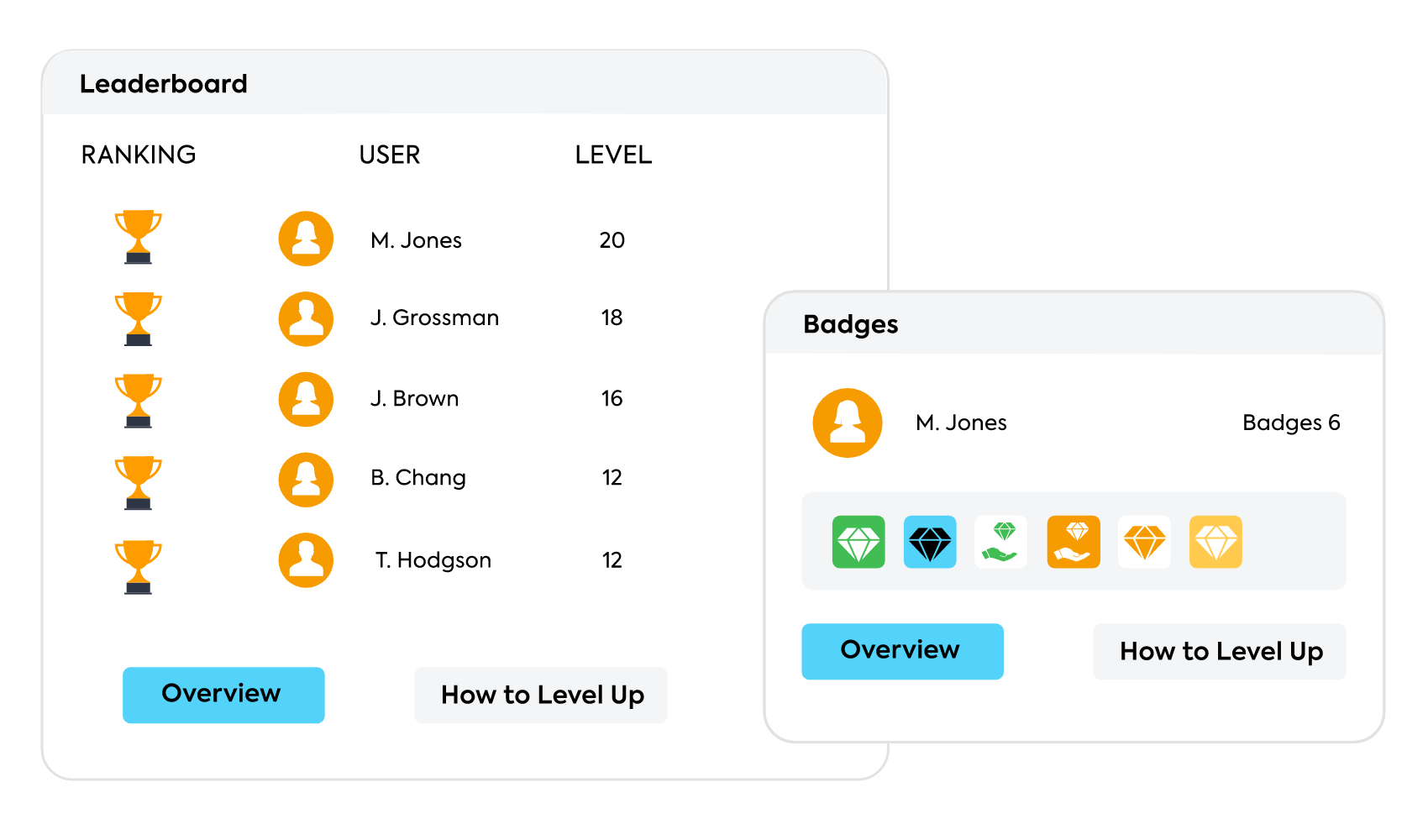Discovering, hiring, and nurturing great talent used to be quite a difficult task. However, companies rolled up their sleeves and invested in best practices for attracting and retaining employees. A few years ago, LinkedIn was full of stop-scrolling posts about beautiful company offices, flexible work schedules, vacation benefits, and more staff incentives.
Then, a pandemic broke out. The focus shifted elsewhere—both for employers and employees. Pretty offices and extra days off were not what mattered most in the remote or hybrid work environment. At the same time, the hit in the economy made it hard to provide extra perks to employees. Funds were not enough.
While getting used to this “new normal,” companies started rethinking their priorities in order to attract and retain employees once again. But incentives this time had to be meaningful, cost-effective, and applicable to the new way of working. Thus, the need for more remote and cost-efficient incentives to keep employees onboard has significantly risen, and businesses care to invest more than ever.
The rise of remote work
Before the pandemic, some companies would allow for occasional work from home days or flexible work schedules that employees really appreciated. Because of the pandemic, companies were forced to transition to remote work or a hybrid model to keep their businesses running smoothly.
Remote work is here to stay. “In 10 years, remote work will simply be work,” according to Prithwiraj Choudhury, a Harvard Business School professor who specializes in the future of work. More and more companies have stopped asking their employees to return to the office, as they are not willing to do so while their performance hasn’t dropped at all. A full remote or hybrid work model is on the table by the majority of businesses. Except for the ones where physical presence is necessary (i.e. hospitals).
Working remotely is not an employee incentive on its own anymore. And this is why when we’re talking about employee incentives, we shouldn’t only focus on the traditional working environment. What about remote-friendly incentives?
Companies should reflect on the bigger picture. A fancy office, ping-pong tables, and happy hours simply don’t do the trick anymore. Employees are looking for other things at the moment. And your organization should ensure proper employee motivation by covering their needs.
This is why each organization should carefully consider the remote-friendly incentives they are willing to offer to create a company culture that deeply engages and motivates remote employees. Improving the employee experience is absolutely necessary.
Why is it important to give incentives to employees?
Gift cards and pizza Fridays are nice to have perks in the workplace. But, they’re not enough on their own to engage people in the long run.
Employee retention is hard. It can be a struggle to retain your most valuable employees. A survey reports that 31% of 1,000 American employees have quit their jobs within the first six months.
Have you heard of the Great Resignation? Fueled mainly by the pandemic outbreak, and the results it brought to their lives, employees have been quitting en masse during the past two years. The result is a tight labor market. Surveys prove that “the majority of workers who quit a job in 2021 cite low pay, no opportunities for advancement, feeling disrespected”.
In brief, findings show that the reasons for high turnover rates are mostly the lack of employee motivation and engagement, poor company culture, and not enough recognition. And it makes perfect sense. People will look elsewhere if they’re never validated or motivated enough to keep going.
This is where employee incentives come into play. By offering meaningful perks, you boost employee morale, give people more reasons to be motivated, and at the same time recognize their efforts.

7 fresh incentives for employee retention
We’ll have a look at the company incentives and employee rewards companies offer to keep their people happy, engaged, and, well, on board, even in the remote work environment.
We’ll spare you any mention of the typical workplace incentives for employee retention (bonuses, stock options, and such), since those are well known, and probably already practiced by your company.
Instead, we’ll go straight into the more creative, imaginative, unexpected, and bizarre incentives for staff motivation and employee engagement that organizations around the world have successfully used to reward their people and reduce churn. We’ll also focus on remote-friendly incentives that are sure to amaze your distributed workforce.
Let’s delve into some of the freshest employee incentives examples.
1. Productive workspaces
A few years back, companies would create modern and highly functional office spaces that were bound to increase productivity while minimizing distractions and noise.
Some years ago, companies would show appreciation to their top talent by offering private office spaces, far from the open office area. Let’s say you were a top sales performer. Your company’s incentive would be to reward you with your own office space. It was considered one of the best employee incentives, even if it was a bit costly.
As most companies have now adopted a remote work or hybrid policy, beautiful office spaces don’t matter that much. Inspiring workspaces increase productivity and engagement, so what happens with the employees who work in the comfort of their homes? Or, those who work in the office only a few days per month?
You can’t expect your workforce to have designed and furnished their workspace at home like you would have done in the headquarters of your company. Most of your employees work in their dining room, bedroom, or just on the couch. This is comfy and cozy, but does it enhance productivity?
One of the most hip remote-friendly employee incentive examples is offering a stipend to buy office furniture at home, pay for access to a coworking space, or provide the equipment they need to work at home.
Want to go the extra mile? Spice things up with a bit of deco-inspo. It’s not necessary to provide them with all the decorations that might boost creativity and motivation, but a fun poster with a motivational quote would be an excellent idea.
And if you do have employees who visit the office, make sure the space is properly organized and equipped, as well. For example, if people gather in the office to work on group projects, it’s best to create some large meeting rooms so they can be comfortable. Or, if people drop by the office occasionally, create some coworking spaces or designated desks so they can always find a spot where they can work.
2. Flexible working hours
With the rise of remote work and hybrid working models, the flexibility to work from the comfort of your own home is not necessarily an original employee incentive example nowadays. It has become the norm.
Companies should redefine what flexibility is to successfully attract and retain employees in the modern workplace.
Why not give them the option to work remotely on a regular basis, choose which days to work from home, or have more flexible working hours, so they can make it for that doctor’s appointment, cater to family members or friends, recharge and boost their mental health and feel less stressed overall?
Remote work has been more popular than ever these past few years, and has spawned an increasing number of services and tools, like enterprise IM tools like Slack and even whole cultures, like “digital nomads”. It’s a fairly simple example of staff incentives that could be easy for you to implement but could mean the world to your people.
Remember that employees who don’t get the perks of flexible working might feel tempted to look for employment elsewhere.
By offering your staff something that other businesses are not offering, they will be more inclined to stick with you. Plus, productivity will rise as they will be able to work without extra stress.
3. Unlimited vacation time
Who doesn’t like vacations? And who doesn’t feel that the days their company offers are not enough to really relax?
No, it’s not the same as getting a sabbatical. And, yes, it’s actually a thing in various companies in order to increase employee motivation and satisfaction.
The key idea is that employees can take as much vacation time as they want—as long as they get their work done. Given this last proviso, “unlimited vacation time” turns out to be quite limited in practice, but still useful as a staff motivation to soldier through a difficult project (and enjoy a week or more of rest before the next one). In other words, it’s more about rewarding employees than offering them a carte blanche to move to the Caribbean.
It’s probably not for all kinds of businesses, and it might fit your company more if work usually comes in project-sized chunks, instead of it being an everyday, year-long, 9-to-5 grind. In any case, it’s one of the staff incentives that really is worth a shot.
4. Fun activities
All work and no play made Jack a dull boy. And it might also make your employees jump ship, too.
Sure, we’re all adults and professionals, but that doesn’t mean we don’t appreciate some good old fun, especially after yet another soul-crushing meeting.
Having a fun and relaxed corporate culture with an element of “play” can span from permitting casual attire to ping pong games and Nerf wars. And from gamification in your Learning Management System to full-blown office karaoke parties. Such staff initiatives can be an important factor in employee retention. As long as you don’t overdo it, of course, and provided that you cover the basics like fair and equal compensation.

Add a touch of fun in the workplace with TalentLMS!
Have your teams engage in friendly competitions and share badges and awards.
Easy to set up, easy to use, easy to customize.
5. Healthy food
The focus on our health has lately increased. You’ve probably heard about companies offering healthy alternatives for snacks at the office or healthy meals to their employees, and thought to yourselves: “that’s a company I’d like to work at”.
Your employees spend most of their day working for your company. Shouldn’t they be given something decent and healthy to eat? Offering healthy food to your employees, be it at the office or at home, is not an expensive investment but, at the same time, it is certain to convince your workforce that their work perks are truly beneficial.
Inspire your employees to stay fit for duty with mouthwatering, healthy meals.
Staff motivation is guaranteed if you make sure that you offer coupons or discounts for meals so your employees can enjoy free food just like they did back in the day at the office. Fast, an e-commerce checkout company sends gift cards to employees for a weekly team meal, along with a weekly snack box, in order to keep the company culture alive even in the virtual world.
6. Pet fun
Another super cute and fun cost-efficient incentive to keep employees onboard you could consider is planning “Bring your pet to work” days. Since the pandemic, more people have decided to adopt a pet so they tackle loneliness and decrease stress levels.
While in lockdown, people would snuggle up on the couch together with their furry friends and work. We’ve all seen tails and whiskers appearing in meetings and everyone seems to take a moment to smile and share their own pet stories. It’s relaxing and a nice ice-breaker.
Pets are known to help tremendously when it comes to mental health issues and anxiety, as they remind people they need to pause for a moment and relax. A short walk, playtime, or some belly scratching allow your employees to take a break and enjoy bits of relief.
For instance, Ben & Jerry’s hosts a daily crew of “K9-5ers” that join their owners at work. In Amazon Seattle’s headquarters, you’re bound to find 7,000 pups on the campus at any given time.
Why don’t you include pets at the office, too? Let your employees bring their pets to work and witness for yourself how productivity levels will rise.
If your workforce is remote, then you can try creating a slack channel dedicated to pets. Employees can share pictures, videos, or information about their furry companions with their coworkers there anytime they want. What a wonderful way to brighten up their day!
And by the way, who would ever think of leaving such an inclusive environment? Employee retention, check!
7. Wellness and health
According to Pfizer “Wellness is the act of practicing healthy habits on a daily basis to attain better physical and mental health outcomes, so that instead of just surviving, you’re thriving.”
Your employees will stick with your company in the long term if you support a healthy lifestyle while working. One of the most motivating remote employee incentives is offering wellness and health options virtually. Which are some employee incentives examples for wellness and health you must offer?
The key areas you need to focus on are:
- Social connectedness
- Exercise
- Nutrition
- Sleep
- Mindfulness
Meet TalentLibrary™
A growing collection of ready-made courses that cover the soft skills
your teams need for success at work
![]()

Plan a buddy system so that all employees can spend time together even online. Encourage them to talk about anything but work, and help them form stronger bonds with members of different teams while at home. A great employee incentive example is to plan collaborative training. Another idea is to organize online workout sessions for your remote workforce, or offer subscriptions to workout apps. Gladly gives their employees a monthly fitness stipend, for example.
Seminars on nutrition are also important to remind your employees that good food helps balance out stress. Encourage them to take plenty of breaks and set a regular sleeping pattern and never overwork themselves. Last but not least, mindfulness practice will help a great deal, so provide this option as well from day 0.
Employees that feel heard are more likely to stick with their companies. Your remote workforce needs a bit of pampering so they deal with their everyday struggles without putting extra effort into planning it. Let them know you value their wellbeing and health, and see the turnover rates decrease.
The best practices for staff incentives
In this post, we had a look at several staff incentives and creative ways to motivate employees, with a focus beyond the typical employee reward schemes (bonuses, etc.) and into more unusual approaches. We also shared valuable tips on remote employee incentives so that your remote workforce doesn’t feel left out.
There are of course many more incentives for staff motivation that are sure to boost employee engagement beyond the ones we’ve examined. Why don’t you ask your employees what kind of incentives they’d like to see?
Get to try some of the ideas we shared with you and see for yourself if they have an impact to your workforce, both at the office and at home.
Originally published on: 15 May 2017 | Tags: Employee Incentives,Remote Employees


